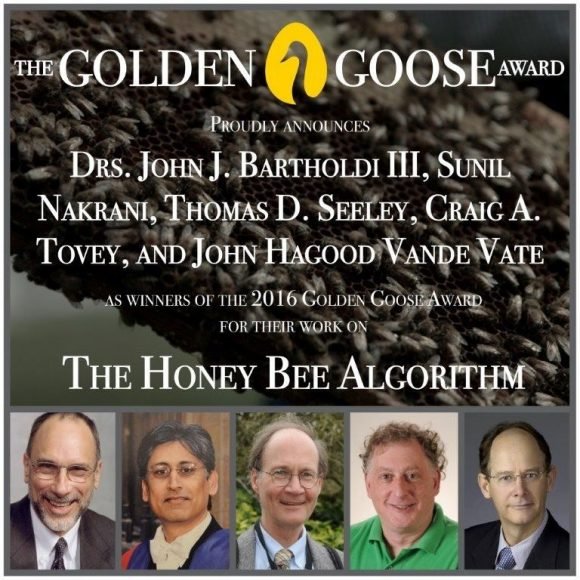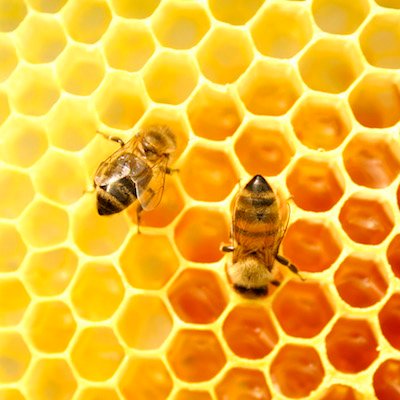The Golden Goose Award, created in 2012, has the purpose to promote the most useful and unexpected scientific discoveries made thanks to the US federal founds. Each year the award goes to three teams of researches whose discoveries returned effective benefits to science and society.
Image from Bee Culture Website
It all started when a graduate student in Computational from Oxford University, Sunil Nakrani, went to the Georgia Institute of Technology, asking to Craig Tovey to help him to find out what is the most efficient and profitable way to allocate web servers resources for the internet users.
They decided to use a ten years old study about how the bees colonies allocated their foragers among sources of nectar from different flower patches.
The interesting thing about the nectar managing system is that there is no central authority to regulate it: everything relies on the sum of all the individual bees behaviors, so that the honey production is maximized
Further tests were conducted using artificial nectar sources and bees colonies, patching every individual bee to monitor everything happened.
In the web hosting scenario, the servers are like the nectar foragers while the users always requesting for different resources are like the ever-changing flower patches.
As a result:
the honey bee algorithm performs up to 20 percent more efficiently than others and distributes web transactions more smoothly and quickly for users.
Source: Golden Goose Award
Documentary by The Golden Goose Award about the Algorithm
About Miele di Borgo - Italian Food Startup
We are breeding bees to help the environment, biodiversity and the earth ecosystem. But now we also know that they are able to provide also really useful help for human technology and optimization of resources!
Our bees at work, from our website Miele di Borgo
Please read our introductory post on Steemit and follow us / reblog to support us!
Miele di Borgo - Historical Italian Villages' Honey